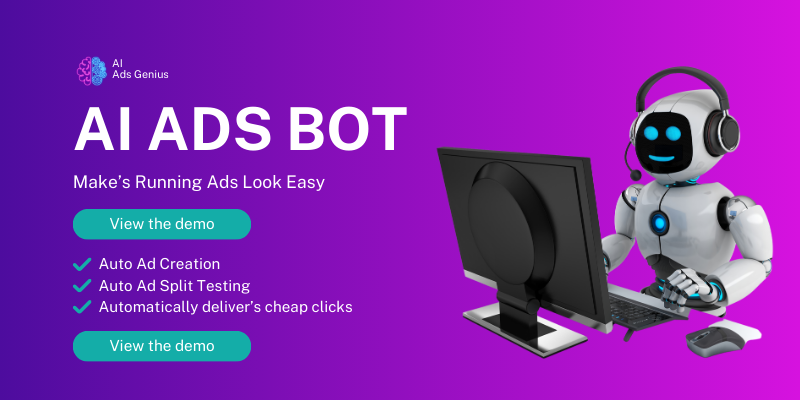Understanding the Power of Video Ads
Why Video Ads Matter
When I first jumped into the world of LinkedIn marketing, I quickly realized that video ads were a game changer. Unlike static images, videos have this unique ability to hold a viewer’s attention. We’ve all seen it happen: a captivating video pops up in our feed, and suddenly, we’re intrigued. That’s the magic of video. It can tell a story, showcase a product, or even become a source of inspiration.
In a professional setting, this becomes even more crucial. People are looking for authentic content, and video allows businesses to convey their brand personality in a way that just isn’t possible through text or images alone. In my experience, video ads can significantly increase engagement and conversions, making them a must-try for any serious marketer.
Moreover, the human element in a video helps build trust and relatability. By showcasing real people and real stories, video ads help potential customers feel more connected to your brand. I’ve seen firsthand how businesses that leverage video effectively see a tangible boost in their customer relationships.
Creating Compelling Video Content
Craft Your Message Wisely
So, how do you start? First off, you need to nail down your message. What do you want your audience to feel or think after watching your ad? In my experience, a clear and concise message is vital. I spend a lot of time brainstorming and ensuring that every single second of my video serves a purpose. Whether it’s to inform, entertain, or inspire—make sure your message shines through.
Think about your audience. What are their pain points? What solutions can you offer? Tailoring your message to address these interests can make a world of difference. I often create personas of my target audience to ensure I’m speaking directly to them. No fluff—just genuine content that resonates.
Finally, don’t forget to include a strong call-to-action (CTA). After investing time in captivating your audience, you want them to act—whether that’s clicking through to your website, signing up for a newsletter, or making a purchase. I’ve learned that a clear CTA at the end of my videos boosts engagement and conversions.
Technical Aspects of Production
Video Quality Matters
Let’s talk about the technical side of things. When I first started creating video ads, I underestimated the importance of video quality. It sounds simple, but poor video can undermine even the best message. Nowadays, you don’t need fancy equipment; even a decent smartphone can do the job if used correctly. Just remember to shoot in good lighting and clear audio. Trust me, it shows!
I also recommend editing your videos to keep them engaging and professional. There’s a plethora of editing tools out there, some even free, that can really elevate your video with minimal effort. Playing around with transitions, filters, and adding text can help you maintain viewers’ attention throughout.
Lastly, always think about the platform specifications. LinkedIn has its own guidelines for video ads, so it’s crucial to follow them closely. Whether it’s length, format, or resolution, adhering to these can make a difference in how your content performs.
Leveraging LinkedIn’s Features
Utilizing Ad Formats
One of the coolest aspects of LinkedIn is the variety of ad formats available. When I created my first video ad, I discovered that LinkedIn allows for both standalone video ads and those that can be incorporated into sponsored content. This versatility enables you to tailor your approach based on your marketing objectives.
In my personal experience, I found that using video as part of sponsored content often yields better results because it blends seamlessly with organic posts. Users are more likely to engage with content that feels native to their feed, and incorporating video here can significantly boost visibility.
Additionally, experimenting with different ad formats can help you optimize your campaigns. Play around with carousel ads or even LinkedIn Stories to see what resonates best with your audience. The analytics tools LinkedIn provides are invaluable for tracking performance—use them to your advantage!
Measuring Success and Making Adjustments
Analyze Performance Metrics
Once your video ad is live, the job doesn’t end there. Tracking performance metrics is critical in understanding how your video is performing. I often analyze metrics like view rate, engagement, and conversion rates to gauge effectiveness. These insights can tell you what’s working and what isn’t.
Don’t shy away from making adjustments based on what your metrics are telling you. If certain styles or messages are performing better, take that feedback seriously. I’ve found that willingness to adapt and optimize is key to a successful video ad campaign.
Lastly, A/B testing is a powerful tool. Try out different versions of your video ad to see which resonates more with your audience. Sometimes, small tweaks can lead to significant improvements in performance, and you might end up with insights you didn’t anticipate.
FAQs About Creating Video Ads on LinkedIn
1. Can I create video ads on LinkedIn for free?
While creating a LinkedIn account is free, running video ads typically incurs costs for promotion. It’s best to budget for advertising, but you can create video content without spending on promoting it.
2. What are the recommended video lengths for LinkedIn ads?
Generally, keeping your videos between 30 seconds to 2 minutes is ideal. The shorter, the better when trying not to lose your audience’s attention.
3. Do I need special software to create video ads?
No need for anything fancy! Various free or affordable tools can help you create and edit videos efficiently—look for user-friendly options that fit your needs.
4. How can I improve the engagement of my video ads?
Focusing on quality storytelling, making sure your videos are visually appealing, and utilizing strong CTAs can significantly enhance engagement rates.
5. How often should I post video ads on LinkedIn?
This really depends on your audience and strategy! However, regular, consistent posting tends to foster better engagement and brand recognition.

